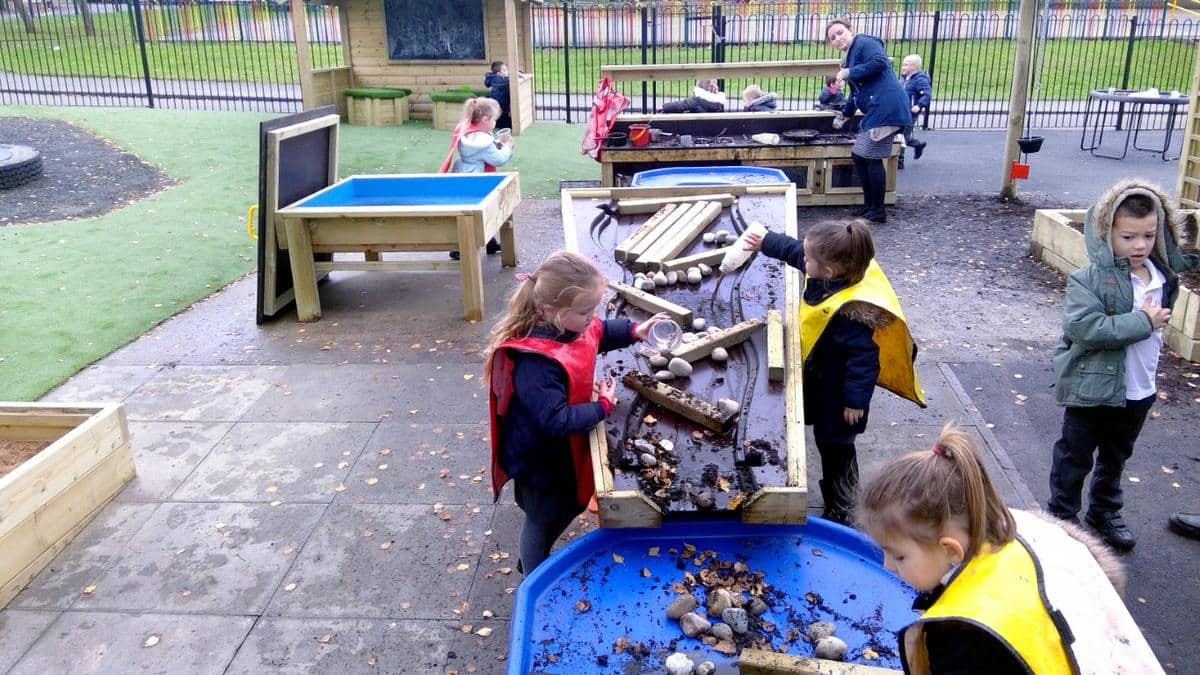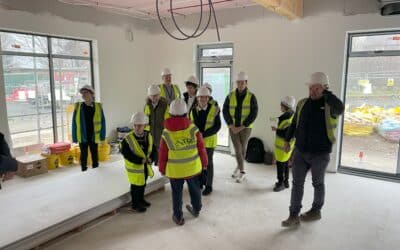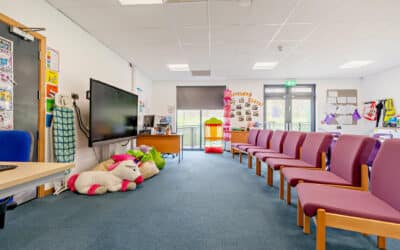TG Escapes Blog
10 Tips for Creating Engaging Outdoor Learning and Play Environments
Effective outdoor learning, through purposeful and planned experiences in the outdoors, is an essential part of life for children of all ages, backgrounds, and abilities.
Whether academic or social development, or improving their physical and mental health and wellbeing, it serves so many purposes. It helps children to reflect and learn about themselves, others and the world around them.
It’s little wonder, then, that creating engaging outdoor learning and play environments features prominently on the agenda at so many schools across the country. But how do schools actually go about making the most effective use of their outdoor spaces?
Here are 10 top tips for helping you to create enabling outdoor environments in your school or nursery grounds:
1 Easy Access
For outdoor learning to be effective, it should be a part of a regular routine rather than an occasional event. In Early Years settings, it is better when children can move freely between the indoor and outdoor environment.
Achieving this, however, can be something of a logistical challenge, and the great British weather doesn’t always help! Adults and children alike need shade and shelter from extreme weather conditions - it’s never as simple as just opening the classroom door and hoping for the best.
2 Suitable Surfacing
Surfacing is often overlooked, yet it makes an enormous difference to an outdoor learning space’s effectiveness.
Although grass can be favoured for its natural qualities, it is high maintenance and often muddy and unusable for much of the year.
Uneven paving and hard, crumbling concrete can render many outdoor spaces unsafe or inaccessible.
Installing all-weather surfacing designed specifically for schools and nurseries is a cost-effective of way of making the most of an outdoor space, ensuring it can actually be used year round. It opens, brightens and can even act as play and learning resource in itself.
3 Storage
Never underestimate the value of good storage facilities! Modular classrooms include useful secure storage spaces for equipment ranging from stationary to musical instruments, small world toys to bikes, trikes and sports equipment.
Pentagon supply and install self selecting stores, available in a range of sizes to suit all sorts of outdoor spaces, offering children the opportunity to safely access toys and resources for themselves.
They keep equipment secure and clean and allow setting up and clearing away to become shared tasks where children participate and learn responsibility and independence.
4 Variety
Outdoor learning is enhanced by an environment that has a variety of open-ended and flexible resources. Exciting materials and equipment that can be adapted and used in a variety of different ways and according to the interests and abilities of the children using them, offer plentiful opportunities for play and learning. It really isn’t about quantity, just a good selection of meaningful play resources that can be rotated to keep the interest alive.
5 Get Messy with Natural Resources
An outdoor water supply is absolutely essential in any good outdoor learning environment. Water enriches children’s play and learning opportunities all year round.
To children, water can be many things - magical, intriguing and soothing. They can explore, channel water from one place to another, or discover how it can make other things move.
It’s one of the best forms of sensory and messy play and it’s a perfect resource for STEAM learning. Investigate how it effects surfaces and substances, changes with temperature, how it is affected by gravity and the strength of its own force.
Learn about the water cycle and how plants and animals need water for survival. Pentagon’s outdoor Water Wall combinations allow children to enjoy learning kinaesthetically and be wonderfully inventive and imaginative with their ideas and theories.
As a general rule, natural materials such as water, sand and soil are some of the best resources you can provide for outdoor play.
They are easy to obtain and store, inexpensive, versatile and have excellent play and learning value.

6 Experience the Living World
From studies of plants and insects to exploring ecosystems and cycles of life, learning about the living world helps children learn to become caring and responsible adults.
Children are expected to build on their understanding of the natural world at EYFS and throughout all the Key Stages as they follow the curriculum in greater detail.
There are numerous studies that explain how beneficial time in nature is for good mental health and emotional resilience. In a learning environment, it’s a brilliant way of building relationships and self confidence as it generally involves group activities.
7 Be Active
The health benefits of physical exercise are well documented. Schools can capitalise on their outdoor spaces for active, physical play provision and PE lessons.
With concerns about childhood obesity in the UK (nearly a third of children aged 2 to 15 are overweight or obese) and campaigns and initiatives to get more children up and moving on a daily basis from the likes of the NHS, Sport England, the Youth Sport Trust and The Daily Mile, there are plenty of reasons for encouraging children to get active.

8 Reading and Creating
Good outdoor play and learning environments engage children in creative and expressive play opportunities in ways not always possible indoors.
Many children find the outdoors more flexible, informal and liberating, so they are naturally encouraged to relax, join in and express themselves.
Perhaps because of this, role play and “home” activities seem to work much better outdoors, with resources such as mud kitchens and play dens being firm favourites.
Children draw inspiration from nature and being outdoors. Blank canvases such as giant outdoor chalkboards and whiteboards, art easels and even the ground itself are perfect for encouraging younger children to experiment with mark-making and for older children to use to improve their handwriting and art-based skills.
9 Building Dens
Den-building is a special kind of construction that is especially important in outdoor provision with the space available and the challenge of creating a real-life “shelter from the elements”.
Building dens allows children to use their imaginations for creative thinking and learning. They can plan, investigate, negotiate, engineer, construct and evaluate. They learn to work as a team, develop their own sense of self and enjoy the sense of achievement gained from playing in something brilliant that they have created for themselves.
Den-building resources such as den posts, wigwams and play houses offer a fantastic base which child can dress and adapt with different resources provided.
Add cardboard boxes, blankets, ribbon and string, paint and nets to the mix and they can engage for hours.
10 Layout and Zoning
Thoughtful layout is important for an outdoor learning space to be successful. You need room for everyone to be able to comfortably and safely manoeuvre around equipment. Bold colours and marked edging help children with visual impairments or mobility problems to navigate spaces.
Creating specific zones helps children to know that some areas are busier than others and offer different types of play and learning.
Include safe places where children can observe until they are ready to get involved as well as more active places where children can let of steam.
This article has been written by our friends at Pentagon Play who are specialists in designing outdoor learning environments which are stimulating and challenging for children.
About the author
More posts from our blog
TG Escapes partner with Class of Your Own’s ‘Adopt a School’ Scheme
We're thrilled to announce a landmark collaboration between Stratford upon Avon School, a beacon of the Design Engineer Construct! (DEC) Learning Programme, and TG Escapes. This partnership fostered through Class of Your Own’s 'Adopt A School' scheme, marks a...
Student engagement day at Beacon Hill School
Two members of the team recently had the privilege of showing students and staff around our latest project nearing completion, at Beacon Hill School in Wallsend. The school is North Tyneside’s specialist provision for children with severe learning difficulties that...
The Design Essentials of a Modern SEND Classroom
There is a desperate need for quality new buildings across UK schools, but special schools are in a particular crisis thanks to rising needs and inadequate funding, with an urgent need for buildings that offer children with complex needs a comfortable and safe space...



